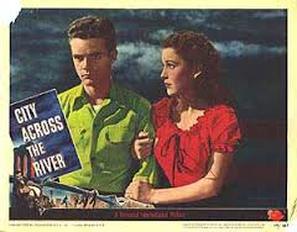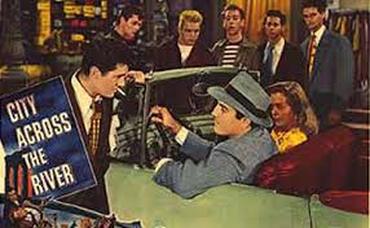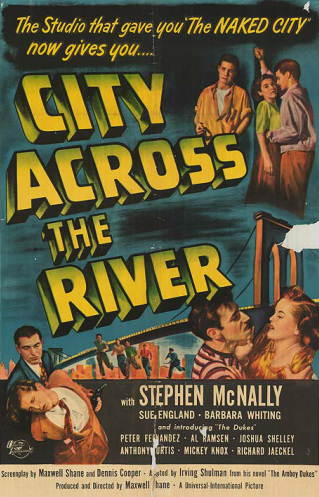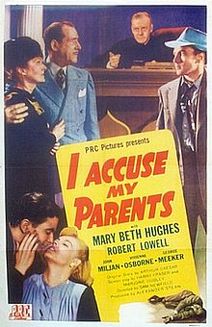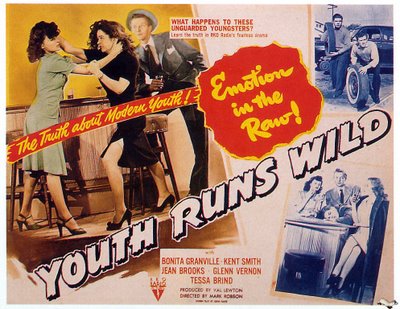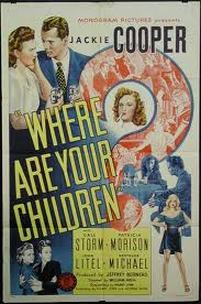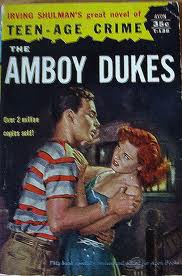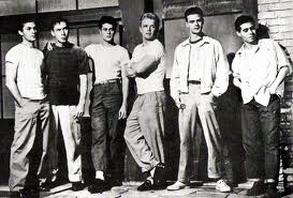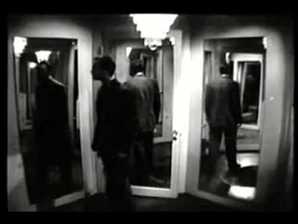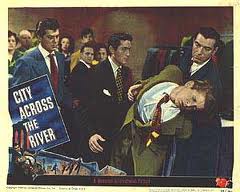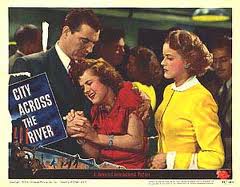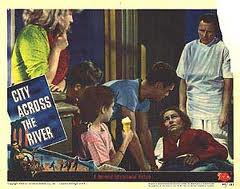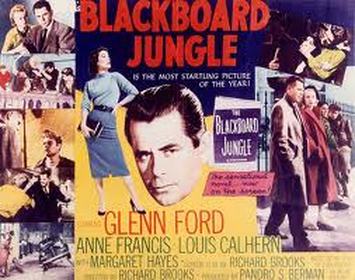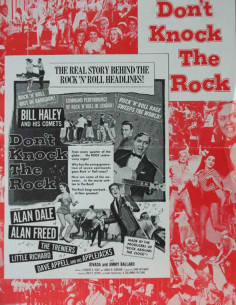The City Across the River (1949) Dir: Maxwell Shane
City Across the River is now known only for being the film that kick-started Tony Curtis' screen career. But it was also the template for such crucial 1950s movies as Blackboard Jungle and Rebel Without a Cause.
For most movie fans, Hollywood's look at juvenile delinquency is associated with the 1950s and such key films as Blackboard Jungle and Rebel Without a Cause, plus that era's numerous teenage exploitation 'B' movies with magnificently lurid titles, such as Hot Rod Girl. But in fact movies about wayward adolescents had become a Hollywood genre a decade earlier.The three posters above advertise movies issued during the years 1943-1945. The origins of this genre can be traced to an earlier period in Hollywood history - the 1930s - when films like Wild Boys of the Road and Angels With Dirty Faces were popular.The thirties and forties delinquency genre shared similar themes: juvenile crime arose out of parental neglect and/or a deprived socio-economic background. But a new factor was involved in the 1940s' cycle of delinquency movies: widespread fears that the widespread absence of fathers serving in the military overseas meant that children were bereft of paternal guidance / authority figures. This fear was frequently expressed by child-saver groups and community and civic figures. Another interesting feature is that these forties' films often blamed middle-class parents for being too concerned with their own interests, especially gaining wealth and material possessions while neglecting their parental responsibilities. City Across the River, however, focuses on the issue of socio-economic deprivation of youth as a cause of youthful crime.
As these lobby cards for the film show, City Across the River focus on the consequences of juvenile crime for the individual and the family
The significance of The City Across the River
City Across the River follows the story of Frank Cusack, a leading member of the Amboy Dukes teenage gang based in a slum-ridden area of Brooklyn. His activities with the gang ultimately lead him from vandalism and hooliganism to complicity in the murder of a school teacher. His hopes -and those of his parents - for an escape from the bleakness of slum life are dashed by his willingness to accept the gang code of not informing to the police.
The film's considerable impact comes from several factors. Although it is not shot in documentary realism style, its settings seem authentic. So does the language. The fact that the cast lacks big name stars and consists mainly of unrecognizable actors makes it more convincing. Most importantly, the film emphasizes the terrible consequences of the son's thoughtless actions for his parents and sister. The parents, especially the mother (Thelma Ritter) are shown as decent, thoughtful working-class people devoting their efforts to provide their children with an education that will enable both siblings to rise out of the tenements. It is a tragic irony that these efforts mean their supervision and guidance of Frank is neglected. The subtlety of this insight is lacking not only in delinquency movies of the I Blame My Parents genre. It gives City a resonance lacking in the most famous of 1950s movies about juvenile crime, Rebel Without a Cause. That movie transplants the familial situation of City into a comfortable middle-class location, but because the family is affluent, with all the advantages, and the son is essentially a whining, spoiled brat, Nicholas Ray's movie lacks the emotional depth of City Across the River.
Although City does suggest that lack of parental supervision is a reason for juvenile delinquency, it squarely pins the blame on living conditions as the chief cause: squalid and unhygienic surroundings, run-down tenements, cramped living space, overcrowding.The moods of frustration and hopelessness created by such an environment, the movie insists, are the reasons behind juvenile delinquency. City Across the River is also interesting in the way in which it highlights the parents' efforts to obtain a good education for their children as a way of uplifting the next generation from a sordid and dangerous environment. This theme was incorporated into Blackboard Jungle, the excellent 1956 movie which also featured life in a rundown area of New York city. A crucial scene in the earlier movie (see clip below) features youths taunting a teacher and disrupting a class: again, this was an important aspect of Blackboard Jungle
The film's considerable impact comes from several factors. Although it is not shot in documentary realism style, its settings seem authentic. So does the language. The fact that the cast lacks big name stars and consists mainly of unrecognizable actors makes it more convincing. Most importantly, the film emphasizes the terrible consequences of the son's thoughtless actions for his parents and sister. The parents, especially the mother (Thelma Ritter) are shown as decent, thoughtful working-class people devoting their efforts to provide their children with an education that will enable both siblings to rise out of the tenements. It is a tragic irony that these efforts mean their supervision and guidance of Frank is neglected. The subtlety of this insight is lacking not only in delinquency movies of the I Blame My Parents genre. It gives City a resonance lacking in the most famous of 1950s movies about juvenile crime, Rebel Without a Cause. That movie transplants the familial situation of City into a comfortable middle-class location, but because the family is affluent, with all the advantages, and the son is essentially a whining, spoiled brat, Nicholas Ray's movie lacks the emotional depth of City Across the River.
Although City does suggest that lack of parental supervision is a reason for juvenile delinquency, it squarely pins the blame on living conditions as the chief cause: squalid and unhygienic surroundings, run-down tenements, cramped living space, overcrowding.The moods of frustration and hopelessness created by such an environment, the movie insists, are the reasons behind juvenile delinquency. City Across the River is also interesting in the way in which it highlights the parents' efforts to obtain a good education for their children as a way of uplifting the next generation from a sordid and dangerous environment. This theme was incorporated into Blackboard Jungle, the excellent 1956 movie which also featured life in a rundown area of New York city. A crucial scene in the earlier movie (see clip below) features youths taunting a teacher and disrupting a class: again, this was an important aspect of Blackboard Jungle
|
|
|
